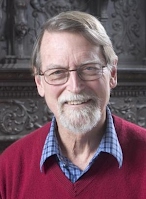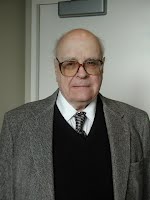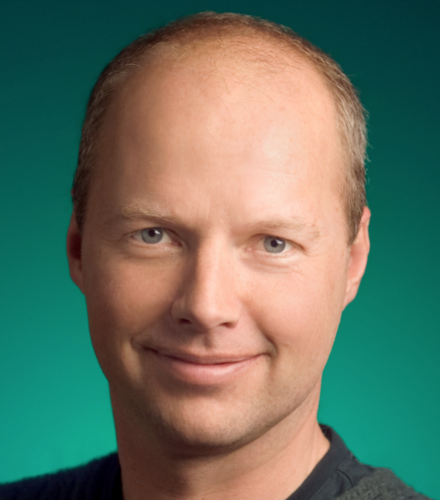Prof. David Mumford: Where are we in Vision? Some thoughts about the "Big Picture" Professor Mumford received his AB degree in mathematics from Harvard University in 1957 and his PhD degree also in mathematics from Harvard in 1961. He continued at Harvard as instructor, 1961; associate professor, 1963; and professor in 1967. He has held visiting appointments at the Institute for Advanced Study (Princeton), Warwick University, the Tata Institute of Fundamental Science (Bombay), the Institut des Hautes Etudes Scientifiques, and Isaac Newton Institute of Mathematical Sciences (Cambridge). He was Higgins Professor in Mathematics until 1997. He was appointed University Professor at Brown in 1996. He served as president of the International Mathematical Union (1995-1998). Professor Mumford worked in the area of algebraic geometry up to 1983. In mathematics he is perhaps best known for inventing geometric invariant theory, a key tool in moduli theory, the study of how the geometric structures in algebraic geometry vary. His subsequent studies on the moduli space of curves have been an important tool in string theory. Since 1984 he has been studying the modeling of intelligence in computer vision, pattern theory and neurobiology. He received the Fields Medal in 1974 and Wolf Prize in 2008. He was a MacArthur Fellow 1987-1992, and was elected to the National Academy of Science in 1975. In 2010 he was awarded the National Medal of Science. His work in computer vision received the Longuet-Higgins Prize at CVPR 2005 and CVPR2009. Prof. Ulf Grenander*: Two Lessons from Ulf Grenander's Second Career (presented by Prof. Stuart Geman) Ulf Grenander was born in Vastervik, Sweden. He earned the Fil. Dr. degree in 1950 from the University of Stockholm. His Ph.D. thesis advisor was Harald Cramér. Grenander’s is known for path-breaking research the areas of pattern theory, computer vision, inference in stochastic processes, probabilities on algebraic structures, and actuarial mathematics. He has published more than one dozen influential books, of which Statistical Analysis of Stationary Time Series (1957, coauthored with M. Rosenblatt), Probabilities on Algebraic Structures (1963; also in Russian), and Abstract Inference (1981) are regarded as classics. His remarkable theory of patterns, introduced in the three-volume lecture notes, Pattern Synthesis (vol. I, 1976), Pattern Analysis (vol. II, 1978) and Regular Structures (vol. III, 1981; also in Russian), proved seminal to the Bayesian approach to image analysis. Grenander has had appointments at the University of Chicago (1951–1952), the University of California–Berkeley (1952–1953), the University of Stockholm (1953–1957), Brown University (1957–1958), and the Institute for Insurance Mathematics and Mathematical Statistics (1958–1966), where he was Professor and Director. From 1966 until his retirement he was the L. Herbert Ballou University Professor at Brown University. A partial list of his honors and awards includes Arhenius Fellow (1948), Fellow of the Institute of Mathematical Statistics (1953), Prize of the Nordic Actuaries (1961), Arnberger Prize of the Royal Swedish Academy of Science (1962), Member of the Royal Swedish Academy of Science (1965), Guggenheim Fellowship (1979), Honorary Fellow of the Royal Statistical Society, London (1989), Honorary D.Sc. degree (1993) from the University of Chicago, Fellow of the American Academy of Arts and Sciences (1995), and election to the U.S. National Academy of Sciences (1998). ---------- * From Mukhopadhyay, Nitis (2006), "A conversation with Ulf Grenander", Statistical Science, 21(3):404-426. Dr. Sebastian Thrun*: Self Driving Cars Sebastian Thrun is a German educator and computer scientist. He is a Google Fellow and a part-time Research Professor of Computer Science at Stanford University and former director of the Stanford Artificial Intelligence Laboratory (SAIL). He led the development of the robotic vehicle Stanley which won the 2005 DARPA Grand Challenge, and which is exhibited in the Smithsonian Institution's National Museum of American History. His team also developed a vehicle called Junior, which placed second at the DARPA Urban Challenge in 2007. Thrun led the development of the Google self-driving car. Thrun is also known for his work on probabilistic programming techniques in robotics, with applications including robotic mapping. In recognition of his contributions, and at age 39, Thrun was elected into the National Academy of Engineering and also into the German Academy of Sciences Leopoldina in 2007. In 2011, Thrun received the Max-Planck-Research Award and the inaugural AAAI Ed Feigenbaum Prize. Fast Company selected Thrun as the fifth most creative person in business in the world. ---------- * From Wikipedia. |
|
Program Details >
Plenary Speakers |



